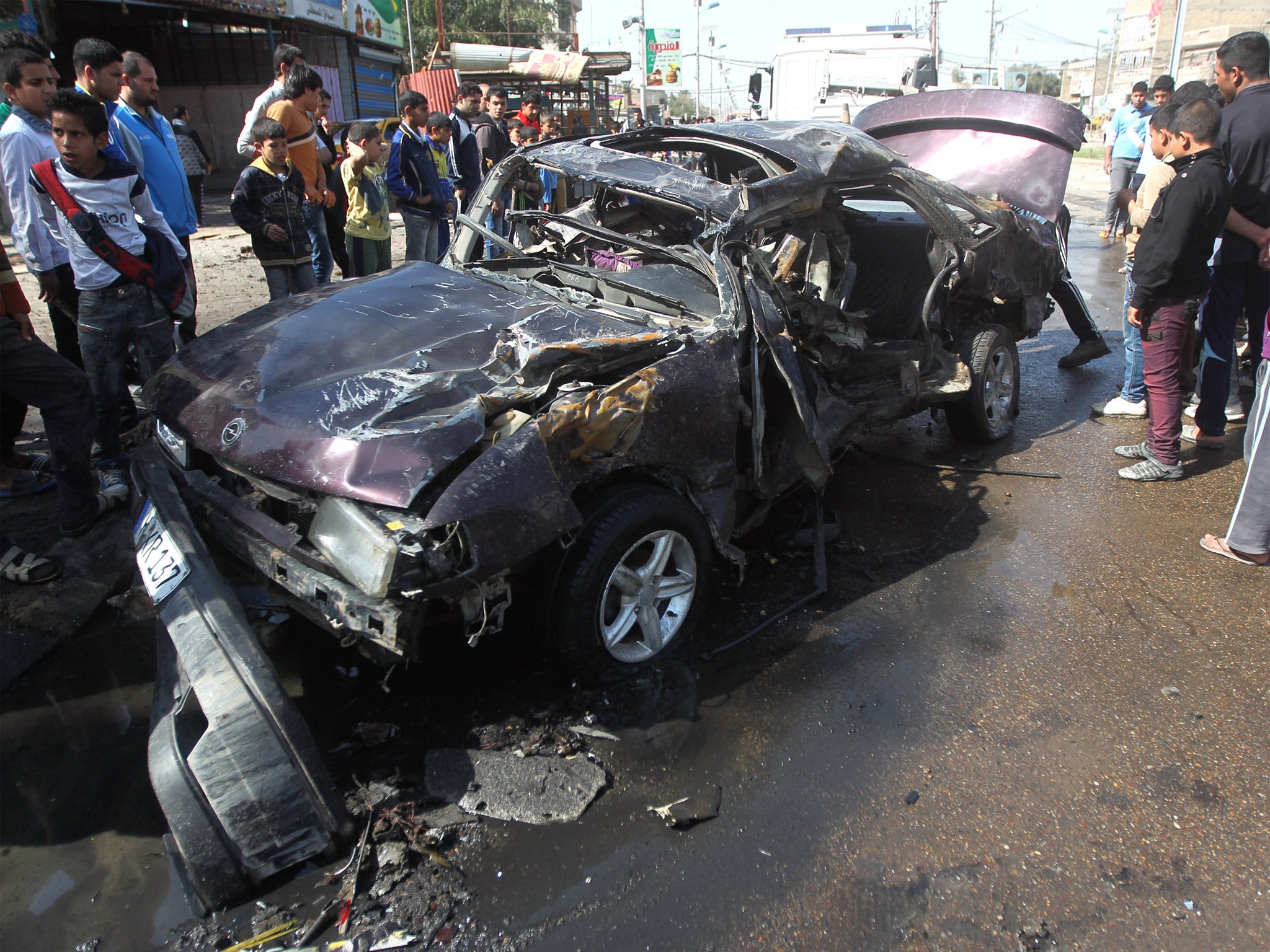Blame Iraq, not America, for sectarian civil war
Iraqi society is as polarised as ever. The ongoing battles over its future shape show that the country's divisions long pre-dated the Western invasion of a decade ago

The opponents of the Iraq war often claim that the invasion caused the bloody sectarian war that erupted between Iraq’s Sunni and Shia. This is far from the truth.
While it is indisputable that the failure of US post-conflict management in Iraq contributed to the disarray and violence that followed the toppling of the regime in April 2003, the US, her allies and the invasion itself, cannot be blamed for the ethnic and sectarian divisions that exist in Iraq.
Iraq has for long been a divided nation; it has been a state since it was created in 1921 after World War I in search of a united nation but which, to this day, remains divided along ethnic and sectarian boundaries.
Almost a decade after the war, Iraqis continue to endure this painstaking process of defining their country, one that is led and driven by warring political factions which, like their constituents, find themselves coalesced around distinct ethnic and sectarian identities.
Seeds of discontent
The creation of the Iraqi state marginalised and isolated the Shia population. The seeds of discontent, agitation and division were planted from the outset.
The removal of Ba’ath dictatorial rule in 2003 paved the way for the Shia to emerge as the new rulers of the country. The transfer of power from the minority Sunnis to the majority Shias allowed for the injustice of history to be corrected. This came at a high cost for Iraqi society.
Iraq’s Sunni and Shia populations contested the realms of power and engaged in a civil war during 2006 and 2007: the Shias emerged victorious, asserting their position as the primary force in the new Iraq as more than 90,000 Iraqis perished in post-conflict violence, compounded by the ascendancy of al-Qaida in Iraq, as well as a proxy war between Iran and the US.
The first time these divisions became more apparent was not after 2003, but in the mid-1960s, when the sectarian polarisation of Iraqi society saw the rise of the Shia Islamic Da’wa Party, Iraq’s most powerful party today, currently headed by Prime Minister Nouri al-Maliki.
The increased politicisation and activism of the Shia during this period saw them become organised and galvanised around a Shia identity although it also had a strong undercurrent of Iraqi nationalism.
So Iraq’s post-2003 sectarian war was long in the making. The Shia awakening, which gained inspiration from the Shia Islamist revolution in Iran in 1979, was suppressed only by the totalitarianism of Saddam Hussein’s Ba’ath regime.
The Shias were always discriminated against under former Iraqi rulers. But it was under the Ba’ath that Iraq started a vicious, systematic and indiscriminate campaign against its Shia population. In the 1970s, tens of thousands of Shias were expelled to Iran under the pretext of their “Persian origins”.
Membership of the Da’wa Party and political activism was banned but thousands of Shias were routinely arrested, tortured and executed, regardless of whether they were Da’wa Party members, supporters or sympathisers.
The Iranian revolution in 1979, the Iran-Iraq war in the 1980s and the 1991 Shia uprising that followed the US-led liberation of Kuwait after Saddam’s invasion of the small oil-rich gulf state, all threatened Saddam’s authority. The Shias paid the price.
In the south, where the post-1991 anti-government rebellion was at its fiercest, between 30,000 and 60,000 people were killed.
Tacit acquiescence
Commenting in 2003, Baroness Emma Nicholson, Chairman of the Amar Foundation, which has provided humanitarian support to Iraqis since 1991, called Saddam’s attack on the Marsh Arabs an act of genocide, Saddam’s second after the 1980s Anfal campaign and chemical attack on the country’s Kurds, which killed more than 250,000 of the country’s Kurdish population to the north, twenty-five years ago this month.
Saddam’s Iraq, if left intact, would have witnessed its own version of the sectarian conflict unfolding in Syria, where the minority Allawite population continue to back the Assad regime, with the support of Shia allies in Iran and Iraq.
The dictator’s crimes were committed with tacit acquiescence of the broader Sunni population. They may have had little choice because of Saddam’s totalitarianism but Shias continue to resent the silence of their Sunni brethren, who will have feared any loss of prestige, status and power to the Shia.
The US thus did not instigate, encourage or provoke civil war in Iraq. Both Saddam’s suppression and Sunni inaction in the face of his crimes, intensified the Sunni-Shia dividing lines, and eventually manifested itself after the dictator’s removal in 2003.
These tensions still remain today, ten years on, despite Iraq’s relative stabilization and the assertiveness of the Iraqi army and security forces. The continued polarisation of Iraqi society and the sectarian nature of the country’s political process show that the battle for the future and identity of Iraq continues. The US and the invasion will soon be a long-forgotten feature of this battle.
Ranj Alaaldin is a Doctoral Researcher at the London School of Economics and Political Science, and a Senior Associate at the Next Century Foundation
Join our commenting forum
Join thought-provoking conversations, follow other Independent readers and see their replies
Comments